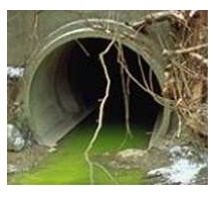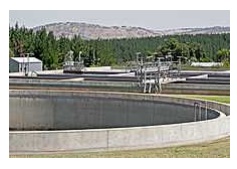Chapter: Civil : Environmental Engineering
Scope of Environmental Engineering
Scope of Environmental Engineering ?
Briefly speaking, the
main task of environmental engineers is to protect public health by protecting
(from further degradation), preserving (the present condition of), and
enhancing the environment. Environmental engineering is the application of
science and engineering principles to the environment. Some consider
environmental engineering to include the development of sustainable processes.
There are several divisions of the field of environmental engineering.
Environmental impact assessment and
mitigation
In
this division, engineers and scientists use a systemic identification and
evaluation process to assess the potential impacts of a proposed project ,
plans, programs, policies, or legislative actions upon the physical-chemical,
biological, cultural, and socioeconomic components on environmental conditions.[10]
They apply scientific and engineering principles to evaluate if there are
likely to be any adverse impacts to water quality, air quality, habitat
quality, flora and fauna, agricultural capacity, traffic impacts, social
impacts, ecological impacts, noise impacts, visual (landscape) impacts, etc. If
impacts are expected, they then develop mitigation measures to limit or prevent
such impacts. An example of a mitigation measure would be the creation of wetlands
in a nearby location to mitigate the filling in of wetlands necessary for a
road development if it is not possible to reroute the road.
The practice of
environmental assessment was intitiated on January 1, 1970, the effective date
of the National Environmental Policy Act (NEPA) in the United States. Since
that time, more than 100 developing and developed nations either have planned
specific analogous laws or have adopted procedure used elsewhere. NEPA is
applicable to all federal agencies in the United States.[10]
Water supply and treatment
Engineers and
scientists work to secure water supplies for potable and agricultural use. They
evaluate the water balance within a watershed and determine the available water
supply, the water needed for various needs in that watershed, the seasonal
cycles of water movement through the watershed and they develop systems to
store, treat, and convey water for various uses. Water is treated to achieve
water quality objectives for the end uses. In the case of potable water supply,
water is treated to minimize the risk of infectious disease transmission, the
risk of non-infectious illness, and to create a palatable water flavor. Water
distribution systems are designed and built to provide adequate water pressure
and flow rates to meet various end-user needs such as domestic use, fire
suppression, and irrigation.
Wastewater
conveyance and treatment
Water pollution

Most
urban and many rural areas no longer discharge human waste directly to the land
through outhouse, septic, and/or honey bucket systems, but rather deposit such
waste into water and convey it from households via sewer systems. Engineers and
scientists develop collection and treatment systems to carry this waste
material away from where people live and produce the waste and discharge it
into the environment. In developed countries, substantial resources are applied
to the treatment and detoxification of this waste before it is discharged into
a river, lake, or ocean system. Developing nations are striving to obtain the
resources to develop such systems so that they can improve water quality in
their surface waters and reduce the risk of water-borne infectious disease.

Sewage treatment plant, Australia.
There are numerous
wastewater treatment technologies. A wastewater treatment train can consist of
a primary clarifier system to remove solid and floating materials, a secondary
treatment system consisting of an aeration basin followed by flocculation and sedimentation
or an activated sludge system and a secondary clarifier, a tertiary biological
nitrogen removal system, and a final disinfection process. The aeration
basin/activated sludge system removes organic material by growing bacteria
(activated sludge). The secondary clarifier removes the activated sludge from
the water. The tertiary system, although not always included due to costs, is
becoming more prevalent to remove nitrogen and phosphorus and to disinfect the
water before discharge to a surface water stream or ocean outfall.[11]
Air quality management
Engineers apply
scientific and engineering principles to the design of manufacturing and
combustion processes to reduce air pollutant emissions to acceptable levels.
Scrubbers, electrostatic precipitators, catalytic converters, and various other
processes are utilized to remove particulate matter, nitrogen oxides, sulfur
oxides, volatile organic compounds (VOC), reactive organic gases (ROG) and
other air pollutants from flue gases and other sources prior to allowing their
emission to the atmosphere.
Scientists have
developed air pollution dispersion models to evaluate the concentration of a
pollutant at a receptor or the impact on overall air quality from vehicle
exhausts and industrial flue gas stack emissions. To some extent, this field
overlaps the desire to decrease carbon dioxide and other greenhouse gas
emissions from combustion processes.
Other applications
· Environmental
policy and regulation development
· Contaminated
land management and site remediation
· Environment,
Health and Safety
· Hazardous
waste management
· Natural
resource management
· Noise
pollution
· Risk
assessment
· Solid
waste management
Water
supply and sanitation in India
Related Topics